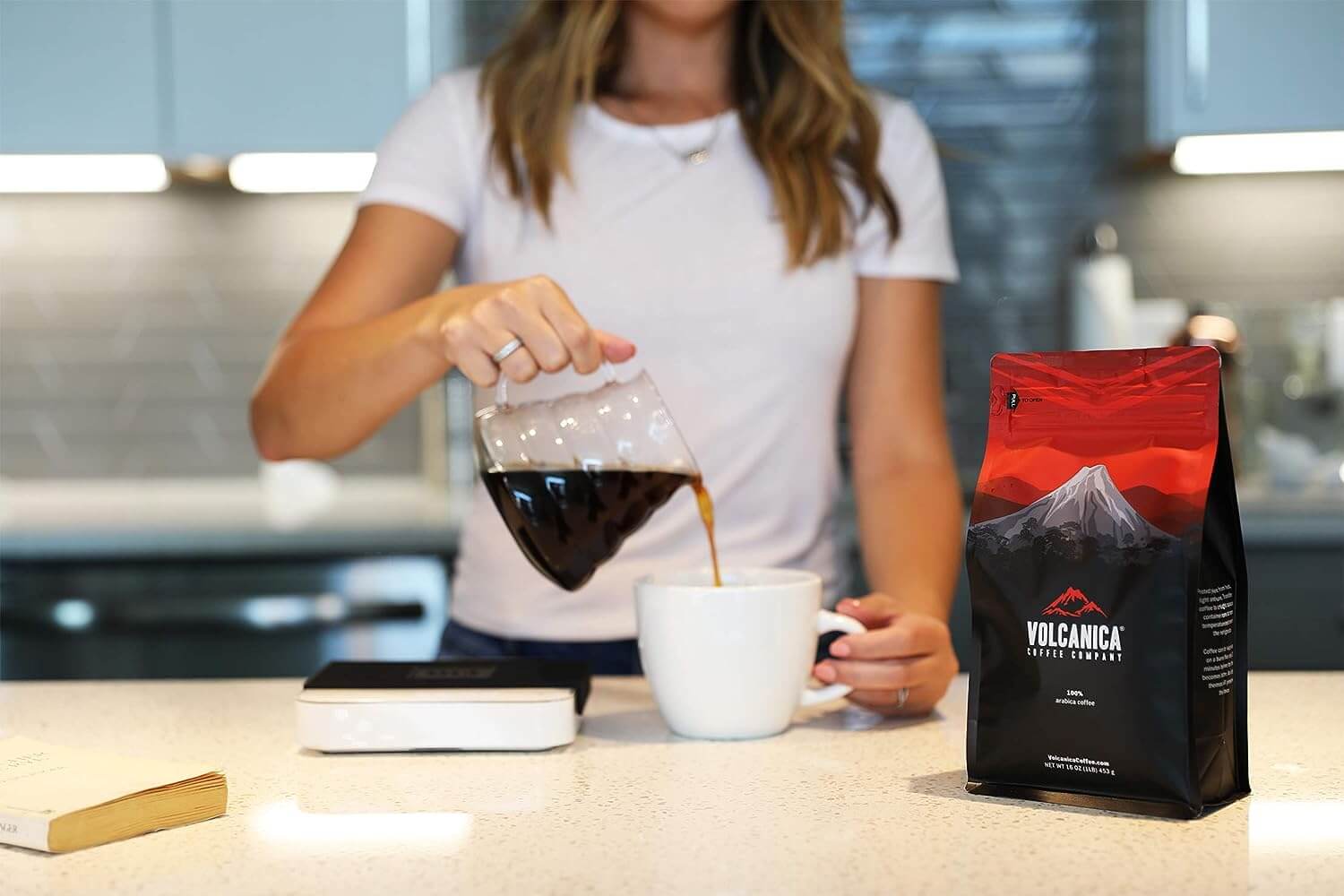Introduction:
In a world where coffee is an essential part of daily routines for millions, the quest for the perfect cup of brew often goes hand in hand with considerations for health and well-being. Pursuing a low-acid coffee option becomes a paramount concern for individuals sensitive to acidic compounds or who suffer from acid-related digestive issues.
Enter the realm of “Which is the best low-acid coffee brand” – a guide dedicated to exploring and unearthing the finest options that not only deliver on flavour and aroma but also cater to those seeking a gentler, more stomach-friendly coffee experience.
In this article, we delve into the nuances of acidity in coffee and how it affects taste and digestion. We’ll navigate the various methods to produce low acid coffee without compromising the rich flavours enthusiasts adore. Whether you’re pursuing a brew that offers a milder acidity profile or are simply curious about the world of low-acid alternatives, this guide will unravel the secrets to finding your perfect cup.
So, join us on a journey that blends the love for coffee with a desire for a more stomach-soothing sip – because enjoying your daily cuppa should be a pleasure that’s both delightful and gentle on your system.
Here is an explanation of Indonesia’s best coffee.

Low-Acid Coffee Brands:
When seeking the best low-acid coffee brands, it’s essential to consider factors such as flavour preferences, roast profiles, and sourcing practices. Here are some popular low-acid coffee brands that are often well-regarded by individuals looking for a gentler coffee experience:
- Puroast Coffee:
- Puroast is known for its roasted low-acid coffee varieties using a proprietary process to reduce acidity. They offer a range of flavours and roasts, providing options for different taste preferences.
- HealthWise Coffee:
- HealthWise Coffee specializes in roasted low-acid coffee blends with a focus on acidity reduction. They offer various roast levels and flavours to cater to diverse coffee preferences.
- Tieman’s Fusion Coffee:
- Tieman’s Fusion Coffee offers “Low Acid Coffee” blends combining coffee with matcha, rooibos, and goji berries. These unique blends are designed to provide a smoother and less acidic coffee experience.
- Lucy Jo’s Coffee Roastery:
- Lucy Jo’s Coffee Roastery offers organic and low-acid coffee options. They source high-quality beans and use roasting to minimize acidity while preserving flavour.
- Trücup Coffee:
- Trücup Coffee produces “Stomach-Friendly Coffee” roasted to reduce bitterness and acidity. They provide a variety of roast shapes and blends to suit different tastes.
- Kava Coffee:
- Kava Coffee specializes in “Acid-Free Coffee” made from beans that undergo a unique steam-treatment process to reduce acidity. Their focus is on providing a smoother coffee option for sensitive stomachs.
- Tylers Acid-Free Coffee:
- Tylers Acid-Free Coffee is a brand that claims to offer coffee with reduced acidity through specific processing methods. It’s essential to research and understand their approach before making a selection.
- HealthWise Coffee Alternatives:
- HealthWise Coffee Alternatives offers blends made from roasted grains and herbs that are caffeine-free and naturally low in acidity. These options provide an alternative to traditional coffee.
- Mastermind Coffee:
- “Mastermind Coffee” is a unique coffee brand offering speciality coffee products specifically designed to enhance cognitive function, focus, and overall mental clarity. The brand’s name suggests its commitment to providing coffee blends and products to support mental performance and productivity.
Remember that individual preferences vary; what works well for one person may not be the same for another. When exploring low-acid coffee brands, consider trying different options to find the one that suits your taste and digestive needs.
Which is the best low-acid coffee brand?
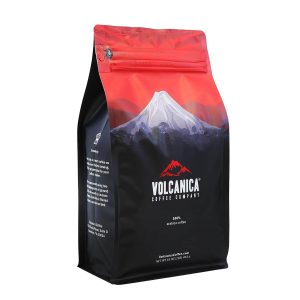
Sumatra coffee is generally considered lower in acidity than coffee from other regions. Sumatra’s unique wet-hulling processing method contributes to the coffee’s lower acidity. During wet-hulling, the parchment layer is removed from the coffee beans. At the same time, they are still relatively wet, resulting in a flavour profile often characterized by earthy and herbal notes, along with reduced acidity.
This lower acidity makes Sumatra coffee popular for individuals who prefer a smoother and less acidic coffee experience. The combination of its entire body, complex flavour, and reduced acidity makes Sumatra coffee distinctive and well-loved among coffee enthusiasts.
What is Sumatran Coffee?
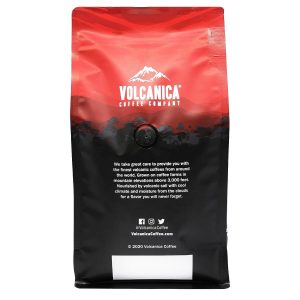
Sumatran coffee refers to coffee grown on the Indonesian island of Sumatra. Sumatra is famous for producing unique, distinct coffee beans with rich and complex flavour profiles. The coffee from this region has gained popularity among coffee enthusiasts due to its bold taste, entire body, and earthy undertones.
Key characteristics of Sumatran coffee include:
- Flavour Profile: Sumatran coffee is known for its deep and complex flavour profile. It often exhibits earthy, herbal, and woody notes, hints of chocolate, spices, and sometimes a subtle fruitiness.
- Whole Body: Sumatran coffee typically has a complete and heavy body, contributing to its rich mouthfeel. This characteristic results from the unique growing conditions and processing methods used in the region.
- Low Acidity: Sumatran coffee tends to have lower acidity than other regions. This makes it popular for those who prefer a smoother and less acidic coffee experience.
- Unique Processing: The traditional processing method used in Sumatra is known as “wet-hulling” or “semi-washed” processing. This method involves removing the parchment layer from the coffee beans while they are still relatively wet. This processing technique contributes to the distinctive flavour profile of Sumatran coffee.
- Origin Varieties: Sumatran coffee includes several distinct varieties, such as Mandheling, Lintong, and Gayo. Each of these varieties has unique flavour characteristics and growing regions within Sumatra.
- Organic and Sustainable: Many coffee producers in Sumatra prioritize organic and sustainable farming practices. This focus on environmental responsibility contributes to Sumatran coffee’s overall quality and uniqueness.
- Popular Blending Component: Due to its bold flavour and low acidity, Sumatran coffee is often used as a component in coffee blends. It can add depth and complexity to espresso blends and other speciality coffee mixtures.
Sumatran coffee’s distinct flavour profile and cultural significance make it a sought-after choice for coffee enthusiasts who appreciate its unique characteristics. When enjoying Sumatran coffee, consider exploring different varieties and roast levels to find the flavour profile that suits your taste preferences.
A Brief History of Sumatran Coffee:

Sumatran coffee has a rich history spanning centuries, with its cultivation and processing methods evolving. Here’s a brief overview of the history of Sumatran coffee:
17th Century – Introduction of Coffee: Coffee was introduced to Indonesia by Dutch colonialists in the 17th century. The first coffee plants were brought to the Indonesian island of Java. Coffee cultivation quickly expanded to other regions, including Sumatra.
18th Century – Dutch Colonial Influence: Sumatra became an important coffee-producing region under Dutch colonial rule. The Dutch East India Company established coffee plantations and significantly shaped Sumatra’s coffee industry.
Traditional Wet-Hulling Process: One of the defining characteristics of Sumatran coffee is its traditional wet-hulling processing method, locally known as “Giling Basah.” This method involves removing the parchment layer from the coffee beans while wet, resulting in the unique flavour profile and low acidity associated with Sumatran coffee.
Cultural and Geographical Diversity: Sumatra’s diverse cultural and ethnic groups contributed to coffee’s unique cultivation and processing practices. Each region and community had its methods, leading to various flavours and profiles within Sumatran coffee.
Challenges and Adaptations: Sumatra’s coffee industry faced economic fluctuations, political changes, and environmental factors. Despite these challenges, coffee remained an essential crop for the local economy.
Late 20th Century – Global Recognition: In the late 20th century, Sumatran coffee gained recognition on the global stage. Its unique flavour, low acidity, and entire body attracted the attention of speciality coffee enthusiasts and roasters worldwide.
Sustainability and Organic Farming: As global awareness of sustainability grew, many Sumatran coffee producers adopted organic and eco-friendly farming practices. This emphasis on sustainability aligns with the increasing demand for responsibly sourced coffee.
Today, Sumatran coffee continues to be celebrated for its distinct characteristics and cultural significance. The island’s coffee industry has adapted to modern demands while preserving traditional processing methods that give Sumatran coffee its unique taste. It remains a favourite among coffee enthusiasts and reminds them of the historical and cultural connections between coffee and the Indonesian island of Sumatra.
Taste of Sumatran Coffee
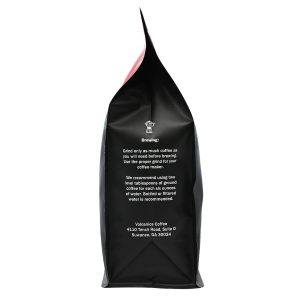
Sumatran coffee is known for its distinctive taste characterized by earthy and herbal notes. It often exhibits a full-bodied richness with hints of chocolate, spices, and sometimes a subtle fruitiness. The unique wet-hulling processing method contributes to its low acidity and smooth mouthfeel.
This coffee’s complex flavours result from the island’s diverse cultural influences and the fertile volcanic soils of Sumatra. Overall, Sumatran coffee offers a bold and complex flavour profile that stands out in the world of coffee.
How to Make Delicious Low-Acid Coffee Drinks?

Creating delicious low-acid coffee drinks can be a flavorful and enjoyable way to savour your coffee while minimizing acidity. Here are some creative ideas for making tasty low-acid coffee beverages:
- Cold Brew Coffee:
- Cold brew coffee is undoubtedly lower in sourness due to its cold extraction process. To make cold brew, combine coarsely ground low-acid coffee beans with cold water in a ratio of about 1:4. Let the mixture steep in the refrigerator for 12-24 hours, then strain and serve over ice. You can sweeten or flavour it as desired.
- Almond Milk Latte:
- Brew a cup of low-acid coffee and heat unsweetened almond milk. Mix the two together for a smooth, creamy almond milk latte with reduced acidity. Add a sprinkle of cinnamon or a touch of honey for extra flavour.
- Ginger Turmeric Coffee:
- Brew your low-acid coffee and add a pinch of ground ginger and turmeric. These spices contribute to a vibrant flavour and offer potential anti-inflammatory benefits.
- Coconut Cream Coffee:
- Blend brewed low-acid coffee with a tablespoon of coconut cream for a rich, tropical-flavoured coffee treat. Top with a sprinkling of cocoa powder or cinnamon.
- Honey Chamomile Coffee:
- Drink a cup of chamomile tea and mix it with low-acid coffee. Add a trickle of honey for natural sweetness and a touch of relaxation.
- Vanilla Oat Milk Coffee:
- Brew your low-acid coffee and heat a cup of oat milk. Add a squish of pure vanilla extract and mix for a comforting and slightly sweet coffee drink.
- Mocha Shake:
- Blend low-acid coffee with ice, a scoop of chocolate protein powder, a ripe banana, and a spoonful of almond butter for a protein-packed mocha shake with reduced acidity.
- Iced Peppermint Mocha:
- Brew low-acid coffee, let it cool, and mix it with chilled almond milk, a dash of peppermint extract, and a touch of chocolate syrup. Pour over ice and enjoy a refreshing mocha with a hint of mint.
- Fruit-Infused Sparkling Coffee:
- Mix low-acid coffee with sparkling water and add slices of citrus fruits like oranges or grapefruits for a bubbly and refreshing coffee drink.
- Mocktail Espresso Martini:
- Brew a strong shot of low-acid coffee and let it cool. Mix it with coconut water, a dash of vanilla abstract, and a squeeze of fresh lemon juice. Jiggle over ice and strain into a glass for a caffeine-infused mocktail.
Adjust ingredient quantities to your taste preferences and experiment with combinations to discover your favourite low-acid coffee creations. Enjoy the process of exploring flavours while prioritizing your digestive comfort.
Advantages of Low Acid Coffee:
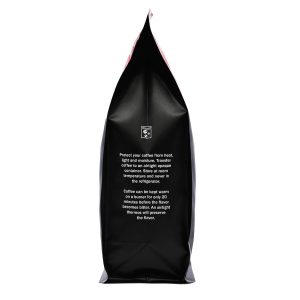
Low-acid coffee offers several advantages, making it a favourable choice for individuals sensitive to acidity or having digestive concerns. Here are some key benefits of low-acid coffee:
- Gentler on the Stomach: Low-acid coffee is processed to have reduced acidity, which can be more tolerable for individuals with acid sensitivity, acid reflux, or other digestive issues. It is less likely to cause uneasiness or irritation in the stomach and oesophagus.
- Reduced Risk of Acid Reflux: Acid reflux happens when stomach acid moves back into the oesophagus, leading to symptoms like heartburn and regurgitation. Low-acid coffee can help minimize the risk of triggering acid reflux and related discomfort.
- Digestive Comfort: Enjoying low-acid coffee may improve digestive comfort, allowing coffee enthusiasts to continue savouring their favourite beverage without harmful side effects.
- Less Intense Flavor Profile: Some individuals find low-acid coffee has a milder and smoother flavour profile than regular coffee. This can particularly appeal to those who enjoy a less intense coffee taste.
- Variety of Options: A growing selection of low acid coffee brands and blends is available in the market. This variety ensures that individuals can find options that suit their taste preferences and desired caffeine content.
- Coffee Enjoyment Without Compromising Health: Low-acid coffee allows individuals to continue enjoying coffee while addressing health concerns. It provides a way to balance the desire for coffee’s flavours and benefits with the need for digestive comfort.
- Potential for Better Sleep: Consuming low-acid coffee, especially in the evening, may help reduce the likelihood of acid reflux-related sleep disruptions, promoting better sleep quality.
- Exploring New Coffee Experiences: Trying low-acid coffee introduces coffee enthusiasts to new flavours and blends they may not have considered before. It encourages exploration beyond traditional coffee options.
- Suitable for Sensitive Individuals: Low-acid coffee is suitable for people with sensitivities to acidic compounds, providing an option that aligns with their dietary needs and preferences.
- Personalized Coffee Choices: With low-acid coffee availability, individuals can make choices that suit their unique health requirements and taste preferences.
While low-acid coffee offers many advantages, it’s important to note that individual reactions to coffee can vary. Some people may experience mild discomfort or reactions even with low-acid options. As with any dietary changes, it’s recommended to consult with a healthcare professional if you have specific health concerns or conditions.
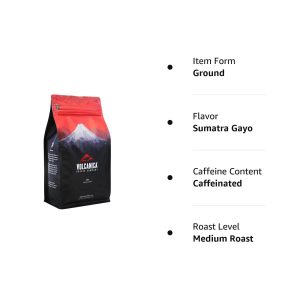
Conclusion:
In conclusion, finding the best low-acid coffee involves considering your taste preferences, sensitivity to acidity, and any digestive concerns you may have. With various brands offering low-acid coffee options, you can explore a range of blends and roasts to discover the one that suits you best. Remember that while low-acid coffee can be gentler on the stomach, it’s not entirely devoid of acidity.
Prioritize quality and flavour as you explore different brands, and don’t hesitate to consult reviews and customer feedback to make an informed choice. Remember that individual responses to coffee vary, so what works well for one person might not be the same for another.
Ultimately, the best low-acid coffee aligns with your health needs, preferences, and enjoyment. Whether you’re seeking a morning pick-me-up or a cosy afternoon cup, the wide variety of low-acid coffee options ensures you can continue to savour the rich flavours of coffee without sacrificing your digestive comfort.
FAQs:
Which coffee has the lowest acid?
Dark roast coffee is often considered to have lower acidity than lighter roast profiles. Here’s an overview of dark roast coffee:
- Dark Roast Coffee:
Roast Level: Dark roast coffee beans are roasted longer, resulting in a darker colour, more pronounced oils on the surface, and a bolder flavour profile. The extended roasting process breaks down the coffee’s natural acidity, making it a popular choice for individuals seeking a low-acid coffee option.
- Flavor Profile: Dark roast coffee is known for its deep, rich flavours and lower acidity. The prolonged roasting process caramelizes the natural sugars in the beans, leading to notes of chocolate, caramel, and toasted nuts. Dark roast coffee often has a fuller body and a more pronounced bitterness, which can mask any remaining acidity.
- Acidity Level: Dark roast coffee has a lower perceived acidity due to the chemical changes that occur during roasting. The acidity diminishes as the beans roast longer, resulting in a smoother and less tangy taste.
- Brewing Recommendations: Dark roast coffee can be brewed using various methods, including drip brewing, French press, espresso, and more. The bold and robust flavours of dark roast coffee make it well-suited for milk-based drinks like lattes and cappuccinos.
- Caffeine Content: Contrary to popular belief, dark roast coffee is not lower in caffeine than lighter roasts. While the roasting process can cause some caffeine loss, the difference is minimal, and factors such as bean origin and coffee variety play a more significant role in caffeine content.
- Ideal For Dark roast coffee is an excellent choice for individuals who prefer coffee with mild acidity and bold, intense flavours. It’s also favoured by those who enjoy a stronger and more pronounced coffee taste without the tanginess often associated with higher acidity profiles.
While dark roast coffee is generally lower in acidity, it’s important to remember that individual sensitivities to acidity can vary. If you have specific acid-related digestive concerns, it’s advisable to try different coffee varieties and roast levels to find the one that agrees with your stomach the most.
What is an excellent low-acid coffee?
An excellent low-acid coffee provides a flavorful and enjoyable coffee experience while minimizing acidity, which can be gentler on the stomach for those sensitive to acidic compounds. While individual preferences vary, here are a few popular low-acid coffee options that are generally well-regarded:
- Puroast Coffee:
- Puroast Coffee is known for its proprietary roasting process that claims to reduce acidity by up to 70%. It offers a range of coffee blends with flavours ranging from smooth and mild to bold and rich.
- Java Planet Organic Coffee:
- Java Planet offers roasted organic, shade-grown coffees to reduce acidity while preserving the bean’s natural flavours. They have a selection of blends and single-origin options.
- HealthWise Low Acid Coffee:
- HealthWise offers a variety of low-acid coffee options specifically designed for sensitive stomachs. They use a steam and water process to reduce acidity while maintaining taste.
- Tieman’s Fusion Coffee:
- Tieman’s Fusion Coffee combines coffee beans with other ingredients like rooibos and matcha to create a smooth and less acidic coffee experience.
- Volcanica Low Acid Coffee:
- Volcanica Coffee offers low-acid coffee beans sourced from volcanic regions, which are believed to have a naturally lower acidity profile. They provide various single-origin options.
- Mommee Coffee:
- Mommee Coffee is designed for pregnant and nursing mothers but is suitable for anyone seeking low-acid coffee. It’s made from beans with lower acid content.
- Lifeboost Coffee:
- Lifeboost Coffee focuses on providing a clean and low-acid coffee experience. They offer single-origin coffee beans grown at high elevations.
Which coffee is best for acid reflux?
When choosing a coffee less likely to trigger acid reflux symptoms, there are a few general guidelines to consider. Remember that individual sensitivities can vary, so listening to your body and adjusting your choices is essential. Here are some options that are often recommended for individuals with acid reflux:
- Low Acid Coffee:
- Look for coffee brands that label their products as “low acid” or “gentle on the stomach.” These coffees are typically processed to reduce acidity while preserving flavour.
- Dark Roast Coffee:
- Dark roast coffee beans are roasted extended, which can result in lower acidity levels. The extended roasting process may make dark roast coffee a better choice for acid reflux patients.
- Decaffeinated Coffee:
- Decaffeinated coffee generally has lower acidity compared to regular coffee. Choose a high-quality decaffeinated option to minimize the potential for acid reflux triggers.
- Cold Brew Chocolate:
- Cold drink coffee is prepared using cold water and a longer steeping time, resulting in a smoother and less acidic taste. This method might be gentler on the stomach.
- Coffee Alternatives:
- Consider alternatives to traditional coffee, such as herbal teas, chicory coffee, or coffee substitutes made from grains like barley or roasted dandelion root.
- Organic and Single-Origin Coffees:
- Some individuals with acid reflux find that organic and single-origin coffees are gentler on their stomachs compared to blends with multiple beans from various sources.
- Aged Coffee:
- Aged coffee is known to have reduced acidity due to the natural ageing process. This option might be worth exploring for those seeking a less acidic coffee experience.
- Moderation and Timing:
- Regardless of the type of coffee you choose, consuming it in moderation and paying attention to the timing of your coffee intake can help minimize the risk of acid reflux symptoms.
Which coffee causes least acid reflux?
Here are five types of coffee that are often considered to cause minor acid reflux:
- Low Acid Coffee:
- As the name suggests, low-acid coffee is specifically processed to reduce its acidity levels. These coffees are designed to be easier on the stomach for individuals with acid sensitivity.
- Dark Roast Coffee:
- Dark baked coffee beans are roasted longer, which can result in lower acidity. The extended roasting process might make dark roast coffee a better option for acid reflux patients.
- Decaffeinated Coffee:
- Decaffeinated coffee generally has lower acidity compared to regular coffee. Opt for high-quality decaffeinated options to minimize the potential for acid reflux triggers.
- Cold Brew Coffee:
- Cold drink coffee is brewed with cold water over an extended period, resulting in a smoother and less acidic taste. This method may be gentler on the stomach.
- Organic Coffee:
- Some individuals with acid reflux find organic coffee easier on their stomachs than conventionally grown coffee. Organic coffee is grown without copied pesticides and chemicals, which might contribute to its gentler profile.
Is any coffee acid-free?
No coffee is completely “acid-free” due to the natural presence of acids in coffee beans. However, some coffee brands market their products as “low acid” or “acid-free” to indicate that their coffee has undergone specific processing methods to reduce acidity levels. One such example is “Tylers Acid-Free Coffee.”
Tylers Acid-Free Coffee: “Tyler’s Acid-Free Coffee” is a brand that offers reduced acidity, making it potentially more suitable for individuals with acid sensitivity, acid reflux, or other digestive issues. It’s important to note that “acid-free” is a marketing term and does not mean that the coffee is entirely devoid of all acids.
The specific processing methods used by “Tylers Acid-Free Coffee” may include:
- Steam Treatment: Some brands use a steam treatment process to reduce the acidity of coffee beans. Steam is applied to the beans to extract a portion of the acids.
- Roasting Techniques: Certain roasting techniques, such as dark roasting, can reduce the acidity of coffee. The longer roasting process breaks down acidic compounds, producing a smoother flavour.
- Blending: Some brands create blends using specific coffee beans known for their lower acidity, which can contribute to a more balanced taste.
It’s essential to approach “acid-free” cautiously and read product descriptions and reviews to understand the brand’s specific claims and processes. If you’re considering trying “Tylers Acid-Free Coffee” or any other low-acid coffee brand, remember that individual reactions to coffee can vary. If you have specific health concerns or are seeking coffee options for acid reflux, it’s advisable to consult with a healthcare professional before making significant changes to your coffee consumption.
Is there coffee without acid?
No, no coffee is entirely without acids. Coffee beans naturally contain acids as part of their composition, contributing to their complex flavours and aroma. While some coffee brands market their products as “low acid” or “gentle on the stomach,” it’s important to understand that these terms refer to reduced acidity rather than the complete absence of acids.
Specific processing methods, roast levels, and bean types can result in coffee with lower acidity levels, making them more suitable for individuals with acid sensitivity, acid reflux, or other digestive concerns. However, even in these cases, the coffee retains some acidity due to its inherent nature.
If you’re seeking coffee that is gentle on the stomach or has reduced acidity, it’s a good idea to explore options labelled as “low acid” or “mild” coffee. Moreover, consulting with a healthcare expert can provide valuable insights into finding coffee that aligns with your health needs and preferences.
Can I drink coffee with GERD?
GERD stands for gastroesophageal reflux disease, also known as acid reflux disease, you might still be able to enjoy coffee, but it’s essential to approach it cautiously and make informed choices. GERD is when stomach acid currents back into the esophagus, producing symptoms such as heartburn, regurgitation, and discomfort. Coffee can potentially exacerbate these symptoms due to its natural acidity and ability to relax the lower esophageal sphincter.
Here are some tips for individuals with GERD who want to enjoy coffee:
- Choose Low-Acid Coffee: Opt for coffee brands that market themselves as “low acid” or “gentle on the stomach.” These coffees are often processed to reduce acidity, which might help minimize the impact on GERD symptoms.
- Dark Roast Coffee: Dark roast chocolate beans are generally lower in acidity due to the longer roasting process. This might make them a better option for individuals with GERD.
- Decaffeinated Coffee: Decaffeinated coffee has lower acidity compared to regular coffee. Choose high-quality decaffeinated options to reduce the potential for GERD triggers.
- Cold Brew Coffee: Cold drink coffee is brewed with cold water and has a smoother, less acidic taste. It might be gentler on the stomach for individuals with GERD.
- Moderation: Limit your coffee intake to a small amount and observe how your body reacts. Some individuals with GERD can tolerate small amounts of coffee better than larger servings.
- Timing: Consider drinking coffee earlier in the day rather than closer to bedtime to minimize the impact on sleep and digestion.
- Monitor Symptoms: Pay attention to how your body responds to coffee. If you notice that coffee exacerbates your GERD symptoms, it might be best to reduce or avoid it.
- Consult a Healthcare Professional: GERD discussing your coffee consumption with a healthcare professional is a good idea. They can offer personalized information based on your health condition and help you make informed choices.
Does coffee increase stomach acid?
Yes, coffee can increase stomach acid production. Coffee is naturally acidic, and its consumption can stimulate gastric acid production in the stomach. This increased acid production can potentially lead to digestive discomfort, heartburn, and acid reflux, particularly for individuals sensitive to acid or with conditions like gastroesophageal reflux disease (GERD).
Additionally, coffee contains compounds such as caffeine and catechols, which are known to relax the lower esophageal sphincter (LES). The LES is a muscular ring that parts the stomach from the esophagus, and its relaxation can tolerate stomach acid to flow back into the esophagus, causing symptoms like heartburn and acid reflux.
For individuals who are prone to acid-related digestive issues, it’s advisable to approach coffee consumption with caution and consider strategies to minimize its potential impact:
- Choose Low-Acid Coffee: Opt for coffee brands that offer low-acid or gentle-on-the-stomach coffee options. These coffees are often processed to reduce acidity.
- Dark Roast Coffee: Dark baked coffee beans are baked longer, which can result in lower acidity. Dark roast coffee might be a better option for individuals sensitive to acid.
- Decaffeinated Coffee: Decaffeinated coffee has lower acidity compared to regular coffee. It might be a milder option for those more prone to acid reflux.
- Moderation: Limit your coffee intake and observe how your body reacts. Smaller servings might be better tolerated.
- Timing: Consider drinking coffee earlier in the day rather than closer to bedtime to minimize its impact on sleep and digestion.
- Consult a Healthcare Professional: If you have acid reflux, GERD, or other digestive concerns, consult a healthcare provider for personalized guidance on managing your coffee consumption.
Is green tea acidic?
Green tea is generally considered mildly acidic, with a pH of 7-10. Like coffee, tea also contains natural acids contributing to flavour. However, green tea tends to have lower acidity levels than coffee.
The acidity of green tea is influenced by factors such as the type of tea leaves used, the growing conditions, and the brewing method. While green tea is generally less acidic than coffee, some individuals with sensitive stomachs or acid reflux may still experience mild discomfort when consuming green tea.
If you’re concerned about the acidity of green tea, you can consider the following tips:
- Brewing Time: Brew green tea for a shorter duration to reduce the extraction of tannins and potential acidity.
- Temperature: Brew green tea with slightly cooler water (around 160-180°F or 70-80°C) to help minimize the release of bitter and acidic compounds.
- Pairing: Enjoying green tea with a small amount of food can help mitigate any potential impact of acidity on your stomach.
- Observation: Pay attention to how your body reacts to green tea. If you notice any discomfort, you might want to adjust your consumption or consider other teas lower in acidity.
It’s worth noting that the specific acidity level of green tea can vary among different brands and varieties. If you have concerns about the acidity of green tea and how it might affect your intestinal system, consulting with a healthcare expert can provide personalized guidance based on your health condition.
How can I get caffeine without acid?
Here is the name list of some coffee which is acid-free.
- Chicory Root Coffee
- Golden Milk
- Yerba Mate
- Herbal Tea
- Matcha Tea
- Chai Tea
- Golden Milk
- Decaffeinated Coffee
- Kombucha
- Which tea is good for acid reflux?
Several herbal teas are recommended as potential remedies for acid reflux GERD. These herbal teas are believed to have properties that can help soothe the intestinal system and relieve acid reflux symptoms. Remember that individual reactions to these teas can vary, so it’s a good idea to try different options and see which ones work best for you. Here are a few herbal teas that are often considered suitable for acid reflux:
- Chamomile Drink:
- Chamomile tea is known for its soothing possessions and can help relax the gastrointestinal tract muscles. It may help ease symptoms of acid reflux and promote overall digestive comfort.
- Ginger Tea:
- Ginger has anti-inflammatory and intestinal properties that can help relieve symptoms of acid reflux. Ginger tea can be beneficial for calming the stomach and reducing irritation.
- Licorice Root Tea:
- Licorice root is believed to have protective effects on the oesophagus and stomach lining. Licorice root tea can help soothe and protect the digestive tract.
- Peppermint Tea:
- Peppermint tea may help relax the oesophagus muscles and reduce spasms, which can contribute to acid reflux relief. However, some individuals with acid reflux find that peppermint can sometimes worsen symptoms, so use it with caution.
- Marshmallow Root Tea:
- Marshmallow root contains mucilage, which can coat and soothe the esophagus and stomach lining. Marshmallow root tea might provide relief from acid reflux discomfort.
- Fennel Tea:
- Ordinary fennel tea is known for its intestinal properties and can help alleviate symptoms of indigestion and acid reflux. It may help soothe the digestive tract and reduce acidity.
- Aloe Vera Juice:
- Although not a traditional tea, aloe vera juice is sometimes consumed to soothe the esophagus and reduce irritation caused by acid reflux.
What can I drink at night for acid reflux?
If you experience acid reflux symptoms at night or want to prevent nighttime reflux, choosing suitable beverages can help minimize discomfort and promote better sleep. Here are some drinks that are generally considered soothing and less likely to trigger acid reflux when consumed before bedtime:
- Herbal Teas: Opt for caffeine-free herbal teas that have soothing properties for the digestive system. Chamomile, ginger, licorice root, and fennel teas are often recommended for their potential to alleviate acid reflux symptoms.
- Decaffeinated Tea: Choose decaffeinated versions of your favourite blends if you prefer tea. Decaffeinated green tea or herbal teas can be gentle on the stomach.
- Warm Milk: A deep glass of milk can have a soothing effect on the stomach and may help ease discomfort. Choose low-fat or non-dairy milk options if you’re concerned about fat content.
- Aloe Vera Juice: Some individuals find that consuming a small amount of aloe vera liquid can help soothe the esophagus and reduce acid reflux symptoms. However, choose pure, high-quality aloe vera juice without added sugars or additives.
- Almond Milk: Unsweetened almond milk is a non-dairy alternative that can be soothing and gentle on the stomach. Be sure to choose options without added flavours or sweeteners.
- Water: Staying hydrated is essential, but avoid consuming large amounts of water right before bed, as this can put pressure on the stomach and contribute to reflux. Sip water in moderation throughout the evening.
- Elevated Sleep Position: Regardless of the beverage you choose, consider elevating the head of your bed slightly to help prevent acid from flowing back into the esophagus during the night.
Is Sumatra a dark roast?
Sumatra coffee is often associated with dark roasts, although it can be found in various roast levels to suit different preferences. The bold and earthy flavour profile of Sumatra coffee and its low acidity make it well-suited for darker roasting.
Dark roasting can enhance the coffee’s deep and complex flavours, bringing out chocolate, spices, and smokiness notes. However, it’s important to note that the roast level can significantly influence the flavour profile of Sumatra coffee. While dark roasting is joint, you can also find medium and medium-dark roast Sumatra coffees that balance the coffee’s inherent characteristics and the roasting process.
Ultimately, the choice of roast level depends on your taste preferences. Whether you prefer a dark, medium, or medium-dark roast, Sumatra coffee’s unique flavour profile will likely shine through, making it a versatile and enjoyable choice for coffee lovers.

